Interested in chaga tea? You've come to the right place. We put together the most complete guide to making chaga tea at home. Whether you're looking to use a commercial chaga tea product that's ready to brew or hack up some whole chaga mushroom for the real-deal, we've got you covered.
Let's dive in!
What is chaga tea?
When you steep chaga mushrooms in hot water, you're making chaga tea. Chaga is an extremely rare medicinal mushroom because it cannot be sustainably or effectively grown in a farm or lab setting. As a result, all chaga mushrooms are wild-foraged.
Commercial tea products might not be following sustainability practices - emphasizing the two sides of buying chaga: the benefits vs the environmental impact.
The good news is, you can easily make chaga tea at home using chaga mushroom extract or wild foraged whole chaga from your backyard!
Why is chaga tea so popular?
In the medicinal mushroom world, drinking your favorite mushroom as a tea is a preferable way to reap the amazing benefits of all of the amazing fantastic fungi.
This most definitely goes for fan favorite, chaga mushroom.
Chaga is a particularly funky mushroom because it doesn’t even remotely resemble what most would think of when they think about mushrooms (we know what came to mind…short white stalk, red cap, spots).
Nope - chaga looks like a large hunk of burnt charcoal, which is called a “conk”, and grows on birch trees across the Northern hemisphere. What’s wild is that they continue to grow and can reach up to 11 pounds when the conk is fully mature.
That’s a whole lot of burnt charcoal mushroom.
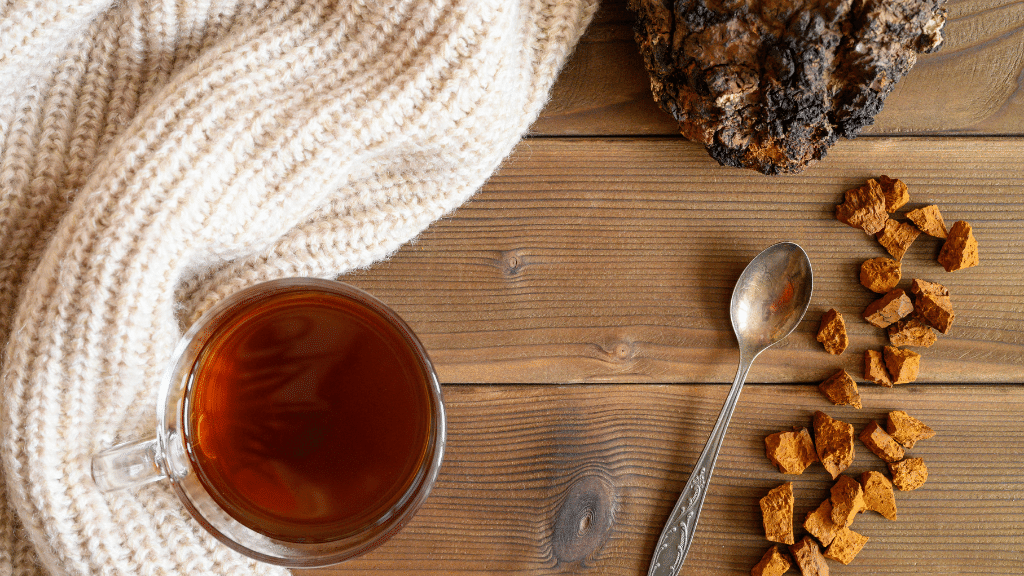
But despite this odd look, chaga is an incredible addition to your daily health regimen because it is full of antioxidants and cancer fighting beta-glucans.
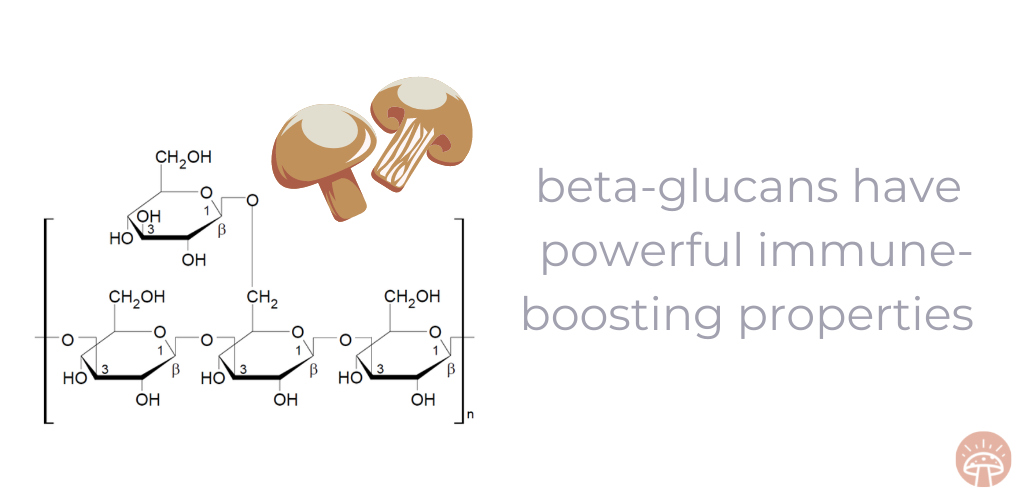
The soft orange core of the conk contains nutrients like vitamin B and D, zinc, magnesium, fiber, and much more.
Plus, chaga has been consumed in tea format for centuries.
That’s right - for over a thousand years, Eastern Europeans have consumed chaga tea to treat cancer, viruses, and aid in general health and wellbeing.
There’s gotta be something to that if they’ve been doing it for that long, don’t you think?
What are the benefits of chaga tea?
As with many medicinal mushrooms, consuming them in hot water allows for the bioactive compounds inside the mushroom to become much easier for the human body to break down.
In the case of chaga tea, using hot water as the extract method allows the person consuming the tea to reap the benefits of this mushroom powerhouse, including:
- Antioxidants (polyphenols)
- Beta-glucans
- Betulin and betulinic acid
- Polysaccharides
- Phytosterols
These numerous compounds found in chaga mushroom have been shown to help with:
- Immune system boost
- Anti-inflammation
- Prevention of cancer
- Cancer treatment alongside traditional chemotherapy
- Blood sugar imbalances
- High cholesterol
- Prevention of heart disease
- Treating heart disease
- Digestion
- Insulin imbalances
- Reducing Rx drug side effects
- General age related disease or side effects
- Tuberculosis
- Anti-tumor
Whew - that’s a list right there. Not too shabby, huh?
Find out more about the benefits of chaga tea with our complete guide here.
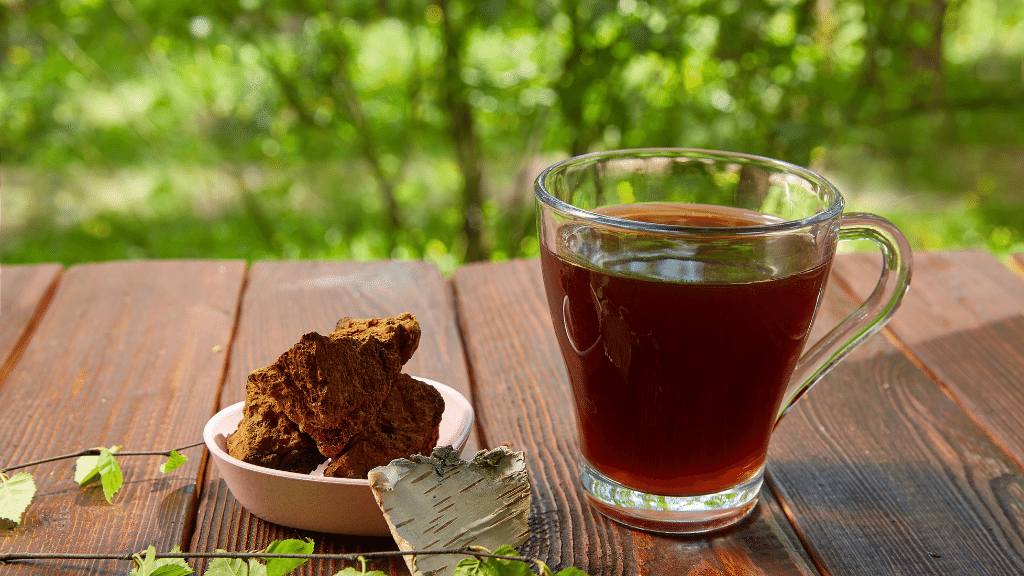
So, with all of this in mind, if you want to start adding chaga tea into your regimen, we recommend first understanding where to get them and then diving into the processes for making chaga tea.
How to make chaga tea from powder
Making chaga tea using powder is a pretty simple process because you’ve done the heavy lifting already by drying and grinding your chaga (woohoo)! We will say that unlike other mushroom varieties, many of the beneficial compounds (e.g., antioxidants) found in chaga will no longer be viable if you boil the water above 180 degrees Fahrenheit.
As long as you’re being careful about your water temperature, you can make delicious, nutritiously dense chaga tea in one of two ways:
Chaga powder tea recipe
If you’re making chaga tea by the cup, all you have to do is boil 8 ounces of water and get your infuser out. Spoon one-to-two teaspoons of chaga tea powder and place it in the infuser. Let it steep for 10-to-15 minutes in your hot water and enjoy!
You can increase the size of the recipe by simple multiplying numbers above (e.g., for two people, boil 16 ounces of water and steep four teaspoons of chaga powder). Easy peasy.
![]()
How to make chaga tea using wild chaga mushroom
If you’re making chaga tea for more than one person, we recommend using a small to medium sized pot that has a wider basin. First place your chaga chunks (note: we recommend that they not be bigger than one inch in diameter) in the bottom of the pot and pour water over them so they are covered.
Bring the water to a boil, and then reduce heat to let it simmer for 15-to-30 minutes based on how many chaga chunks you have.
Here's some advice from our friends over at Real Mushrooms:
If you live in a Northern part of the world where chaga grows naturally, you have the opportunity to harvest this fungi to make homemade chaga tea.
Chaga preparation: Break up some of the chaga into chunks with a hammer so you have pieces that are approximately 1 inch by 1 inch in size. You will get more out of your chaga the smaller and finer the pieces you can break it down into.
Water temperature: Simmer your water to between 140 F and 160 F, which is under boiling temperature. Boiling water can destroy the antioxidants in chaga, so should be avoided.
Water to chaga ratio: Use approximately 1 cup of water for every 1 inch x 1 inch chunk of chaga.
Steeping: Add the chaga to your water in a pot and bring it to a simmer. Simmer for a minimum of 15 minutes, and up to 1 hour. The longer you brew your tea, the stronger it will be. You can re-use your chaga chunks at least one more time for another tea brewing session.
The end result for both teas should resemble a black tea.
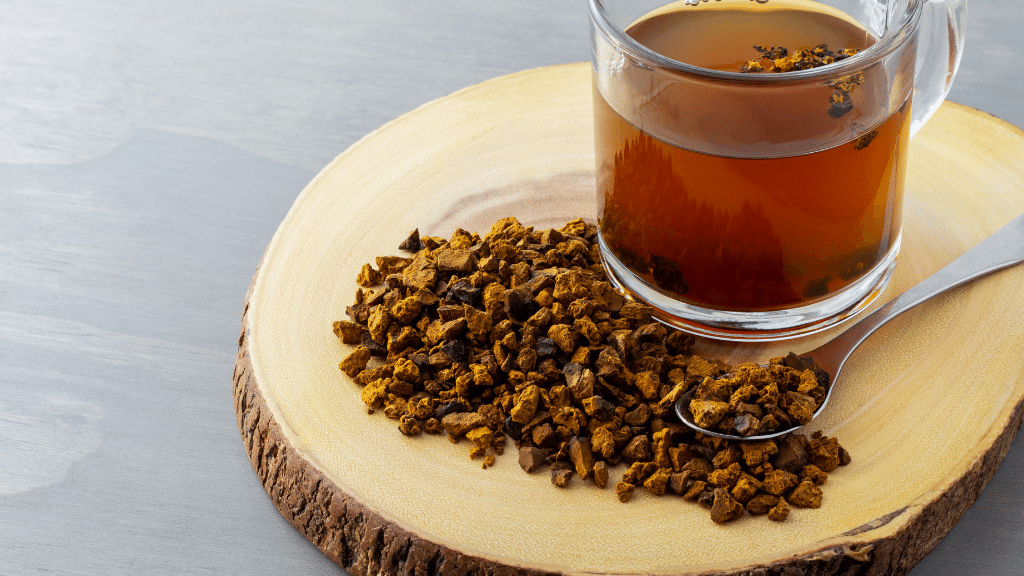
How to improve the taste of chaga tea
Now, the taste of chaga tea by itself isn't for everyone. And that's okay! Chaga tea has a very earthy flavor with a small bite to each sip at the end. Like coffee, it can take some getting used to before you love it as much as we do.
Since it can be labeled as a more bitter tea, we have a few recommendations for you to make your chaga tea experience a bit better.
Simply try your chaga with:
- Lemon
- Plant-based milk (oat, almond, coconut, cashew)
- Natural, low glycemic sweeteners (monk fruit, honey, maple syrup, coconut sugar, etc.)
- Turmeric
- Golden milk
- Spices (cinnamon, allspice, chai, etc.)
How to dry whole chaga for tea
In order to make chaga tea at home, you first (arguably most importantly) and foremost must dry your chaga mushrooms out completely.
We’re talking absolutely no moisture left in those bad boys. The great news? You can do this process with little to no equipment.
There are drying processes that range from air drying, to oven dehydration, using a commercial dehydrator, and more. Here’s a breakdown on how to go about drying, with some specifications based on the method:
- Gently wipe off any excess residue on your chaga mushroom with a damp paper towel or veggie brush and pat dry gently with a cloth. Be careful not to soak your chaga in water. It's not necessary to rinse your chaga to get it clean enough to eat.
- Cut the fresh chaga mushroom into bite-size pieces and spread evenly in a container or on a sheet
- If you decide to air dry: place them somewhere free from moisture (being near the sun is best). Let them air dry for 7-10 days
- If you decide to put them in the oven: set on low (115 degrees Fahrenheit) and let sit in the heat for an extended period of time - we’re talking up to 24 hours - to let the moisture fully evaporate. We recommend flipping them over midday to cook evenly on both sides.
- If you use a commercial dehydrator: place your mushrooms in a single layer in the dehydrator at 125 degrees Fahrenheit. Leave the chaga in the dehydrator until it has a leathery consistency.
We put together a complete guide to drying mushrooms here.
How to grind chaga for tea
After drying out your chaga, it’s time to grind*. The next step in making a really great chaga tea is grinding down your dried mushrooms into a powder that you will eventually steep.
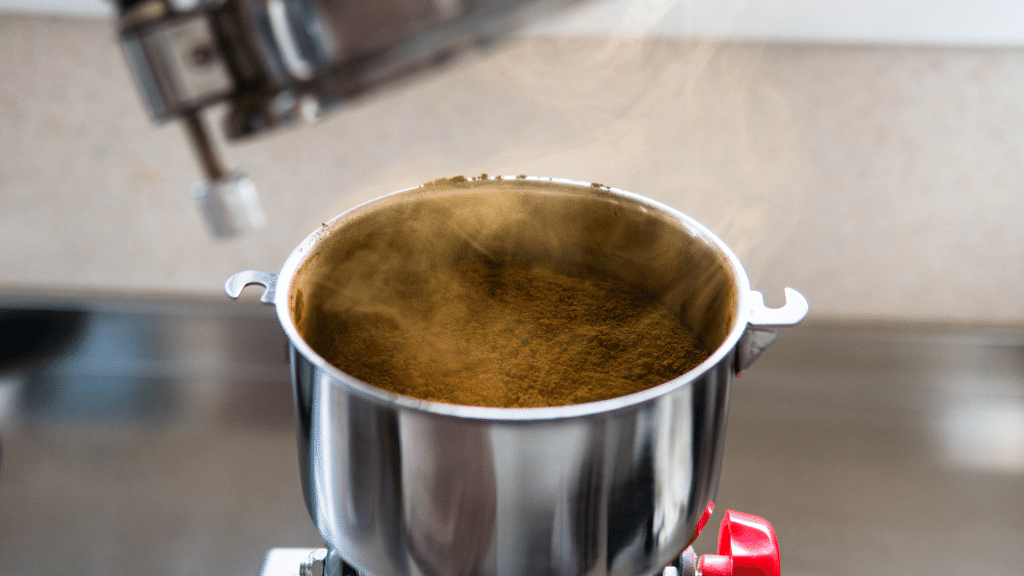
Some of the household tools you can use to make this happen include:
- Coffee grinders
- Food processors
- Magic bullets or small, single serve blenders
- Good ol’ mortars and pestles
- Hand mills
- Cheese graters
- Meat grinders
Do you have any of these in your kitchen? Chances are high that you answered that question with a “yes.” If so, time to grind!
*Note: some people take pieces of whole, dried chaga fruiting body and steep it upwards of 15 minutes to make a tea. We’ll note both methods below for good measure!
The top chaga tea products
With so many companies jumping on the mushroom train, it's important to shop for products that are not only top quality, but that contain the wholesome mushrooms they CLAIM to contain.
When shopping for a commercial chaga tea product, look for:
- A trusted brand: not all mushroom brands are created equal. Look for top-quality mushroom brands. Or even try to find a local mushroom grower to source your tea from.
- COA: A certificate of analysis shows you the type of mushrooms in your product, the quantity, whether there are dangerous chemicals or additives, and the volume of active compounds like beta-glucans
- Extract powder: Chaga powder that has been pre-extracted means you'll get the most medicinal value from your chaga tea. Learn more about the importance of mushroom extraction with our guide here.
- 100% chaga fruiting body: There is a big debate in the mushroom world about whether fruiting body is better than mycelium. Until there is more regulation and transparancy in the industry, we always recommend choosing 100% fruiting body products so you get the maxiumum amount of mushroom benefits.
At Remeday, we've done significant independent research on the top mushroom brands. We highly recommend the following two brands for your chaga tea:
1. RealMushrooms - Organic Siberian Chaga Extract Powder
Made with 100% fruiting body, sustainably and quality grown, and pre-extracted, this is by far the best chaga powder to make chaga tea at home. Or simply add a bit to your morning coffee. RealMushrooms is a great brand and boasts >8% beta-glucans in their chaga powder. And that's pretty darn high for a chaga extract!
2. Four Sigmatic - Chaga Elixir
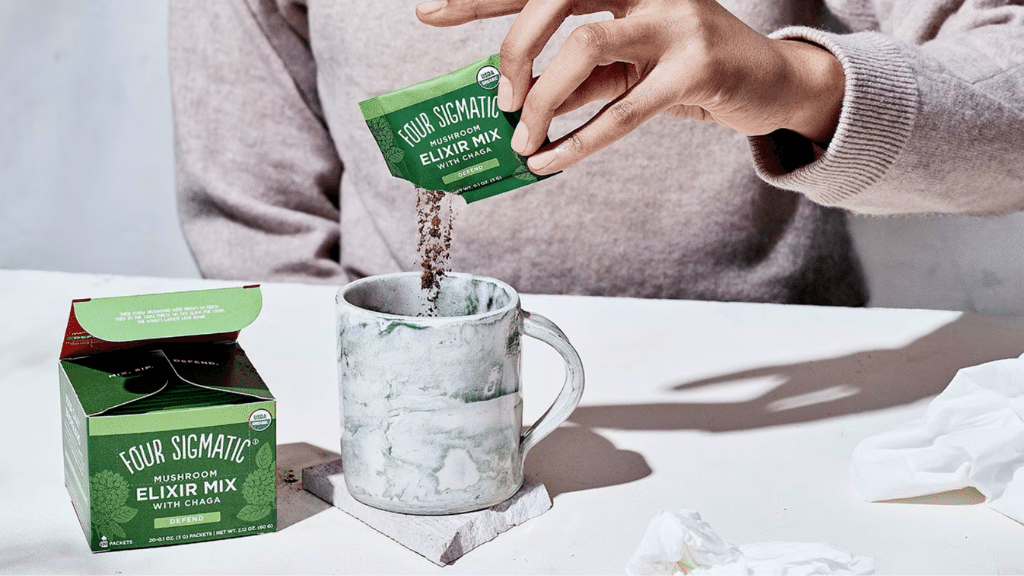
This instant chaga powder is a great option to add to your morning coffee or use to make chaga tea at home. The benefit to this mixture is it comes ready to add directly to your hot water and includes some flavor-boosting ingredients.
Four Sigmatic also uses 100% fruiting body and extracts their powder for maximum medicinal value.
Got a chaga product you love? Want us to review it? Let us know. We'd love to learn more about it!
Where can I get chaga mushrooms for tea?
If you’re looking to forage or use whole chaga mushrooms, chances are you could find this growing in your backyard if you live in colder to temperate climates in the Northern Hemisphere (most notably in New England (USA), Europe, Eastern Canada, Korea, and other parts of Northern Asia.
They grow wild on birch trees and appear like a large growth on the side of the tree trunk.
A really important note if you’re harvesting wild chaga is that you have to harvest from healthy living trees.
Why?
Because chaga is a fungus that eventually kills its host tree and, once the tree dies, the chaga is no longer viable to eat.
In general, harvesting wild mushrooms can be dangerous. Please be careful and do your research if you take this route.
There are, of course, other ways to source chaga that are not as time consuming (or dangerous) if you’re not into the foraging game. We have a few options in mind to consider, including:
- Certified online retailers: You can purchase fresh chaga mushrooms online! If you take this route, we highly recommend looking for your retailer’s Certificate of Analysis (CoA) that will educate you on their growing practices and inputs. It also just solidifies that they’re a legitimate company (always a good thing).
- Local specialty and/or natural food stores: From your local co-op to the big bad Whole Foods, many specialty and natural food stores will carry various wild mushrooms in fresh or dried format. Take a look and see what you find!
Still not sure? Try contacting your local mushroom farm to see if they've foraged any you can buy.
Making your own chaga powder to steep tea at home is a special, but more time-consuming process than simply purchasing powder from your favorite supplement store.
However, the process also ensures that you know exactly what is in your tea. That’s a win!
Chaga powder not your thing? We get it. You can get all the benefits of chaga tea (without needing to make any tea) if you take a tincture directly under your tongue. We absolutely LOVE Life Cykel's chaga+ tincture. As a smaller company, they are able to really zero-in on quality and potency. Check them out here:
How to store your ground chaga for tea
The great thing about chaga tea powder is that if it’s cared for and left in a place where no moisture can get to it, the powder can last up to five years. We recommend storing it in a dark, temperature-neutral place in a paper bag or airtight container where the powder can breath while remaining dry. A lot of people say it’s great to keep it in the fridge in a brown paper bag, while others say in a pantry in a mason jar.
The jury is out, but really, it’s up to you.
Just ensure that it won’t be subjected to high heat or frigid temps wherever it’s stored.
Yum! We’re off to steep some chaga tea for ourselves. If you make it, let us know! Happy sipping.


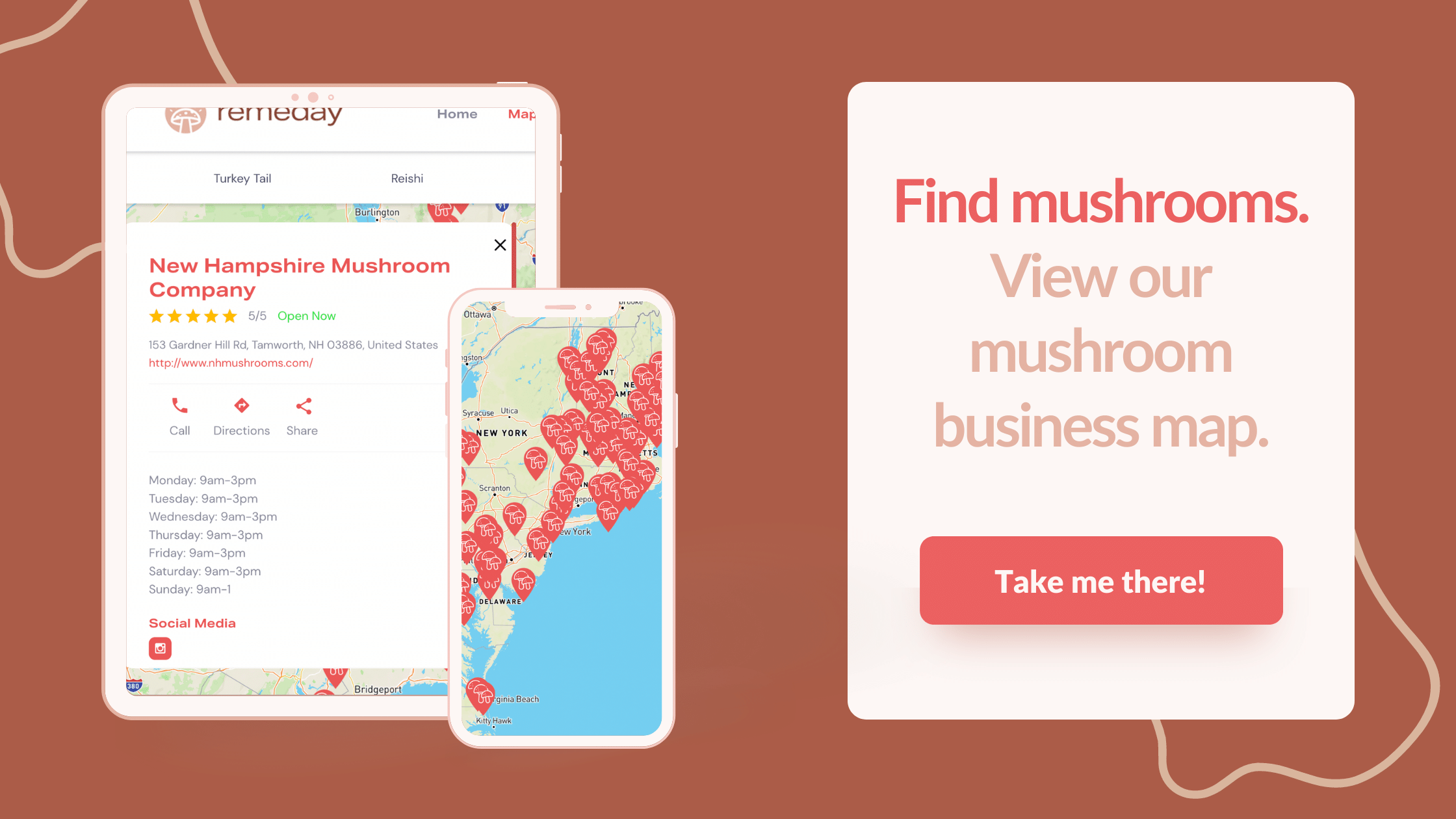


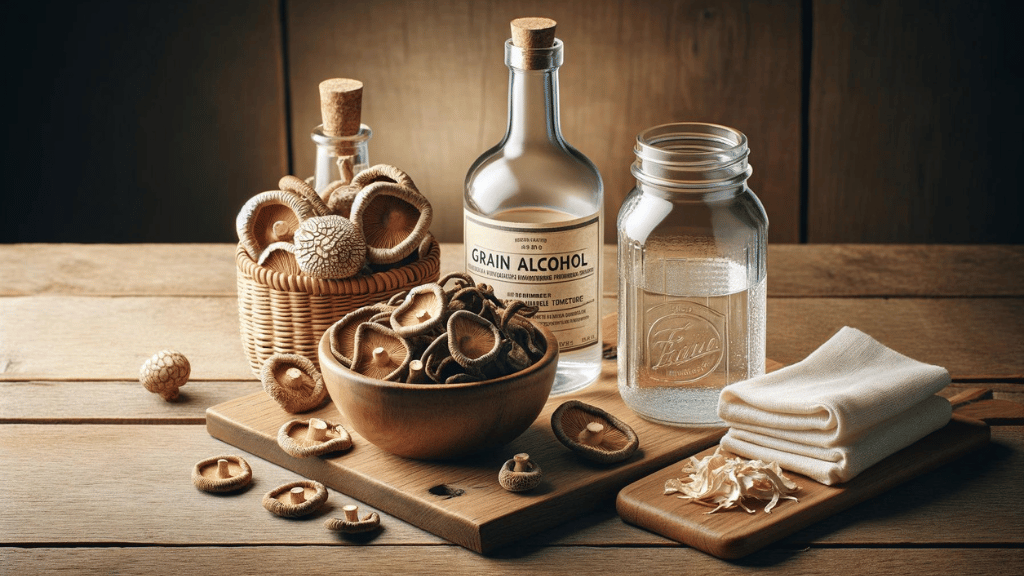


.png)
